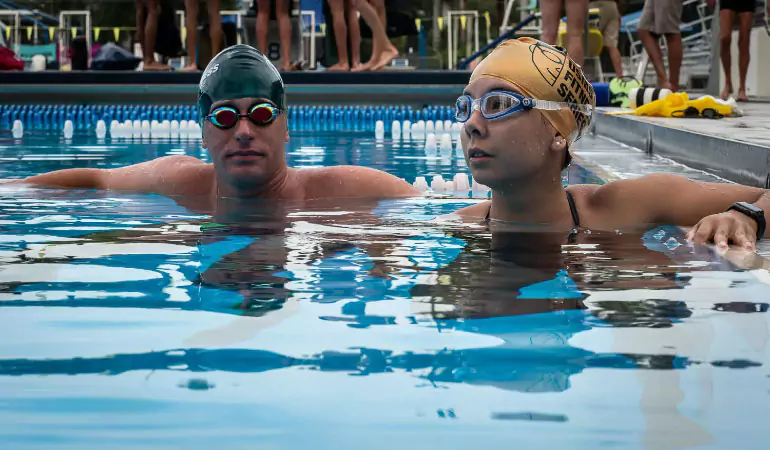
Swimming is not only a fun and refreshing activity, but it’s also an excellent way to improve your fitness and overall well-being. If you’re new to swimming and eager to dive into this exciting sport, this beginner’s guide will provide you with the essential information and tips to get started.
The first step in your swimming journey is finding a suitable pool. Look for public pools, community centers, or fitness clubs in your area that offer swimming facilities. Check their operating hours, availability of swimming lanes, and any specific rules or regulations they may have.
Before jumping into the water, you’ll need a few essential swimming gears. The most important item is a comfortable and well-fitting swimsuit. For men, swim trunks or swim briefs are common options. Additionally, invest in a good pair of swim goggles to protect your eyes and improve underwater visibility. You may also consider a swim cap to keep your hair out of your face and reduce drag in the water.
Water safety should always be a priority, especially for beginners. Make sure you are aware of the pool’s safety rules and adhere to them. It’s also important to know how to float and tread water to ensure your safety in deeper sections of the pool. If you’re not a confident swimmer, consider taking swimming lessons to learn proper techniques and essential water safety skills.
Before entering the water, it’s crucial to warm up your muscles and do some stretching exercises. This will help prevent injuries and prepare your body for swimming. Simple warm-up exercises like jogging in place, arm circles, and leg swings can help loosen up your muscles and get your blood flowing.
There are four main swimming strokes: freestyle (also known as front crawl), backstroke, breaststroke, and butterfly. As a beginner, it’s best to start with freestyle and backstroke, as they are the easiest to learn. Familiarize yourself with the basic arm and leg movements for each stroke, and practice them with the help of a qualified instructor or swimming coach.
Proper breathing techniques are essential for efficient swimming. In freestyle and backstroke, learn to inhale through your mouth while your face is out of the water, and exhale through your nose or mouth while your face is submerged. Practice breathing on a regular basis to develop good lung capacity and rhythm.
Swimming is a great cardiovascular exercise that can help build stamina and endurance. Start with shorter distances and gradually increase the distance as your fitness level improves. Don’t be discouraged if you feel tired initially; with consistent practice, your endurance will improve over time.
Like any skill, swimming requires practice and consistency to improve. Aim to swim regularly, ideally at least two to three times a week. Regular practice will help refine your technique, build strength, and boost your confidence in the water.
Observing and learning from experienced swimmers can be extremely beneficial. Watch swimming videos online, attend swimming events, or join a swimming club or group where you can swim alongside more experienced swimmers. Don’t hesitate to seek advice and guidance from them; most swimmers are more than willing to share their knowledge and help beginners.
Lastly, remember to have fun and enjoy the process of learning to swim. Don’t be too hard on yourself if progress seems slow at first. Celebrate small achievements and milestones along the way. Swimming is not only a great physical activity but also a wonderful way to relax and de-stress.
With these beginner’s tips, you’re ready to embark on your swimming journey. Embrace the water, stay committed to practice, and soon enough, you’ll experience the joy of gliding through the water with confidence and ease.